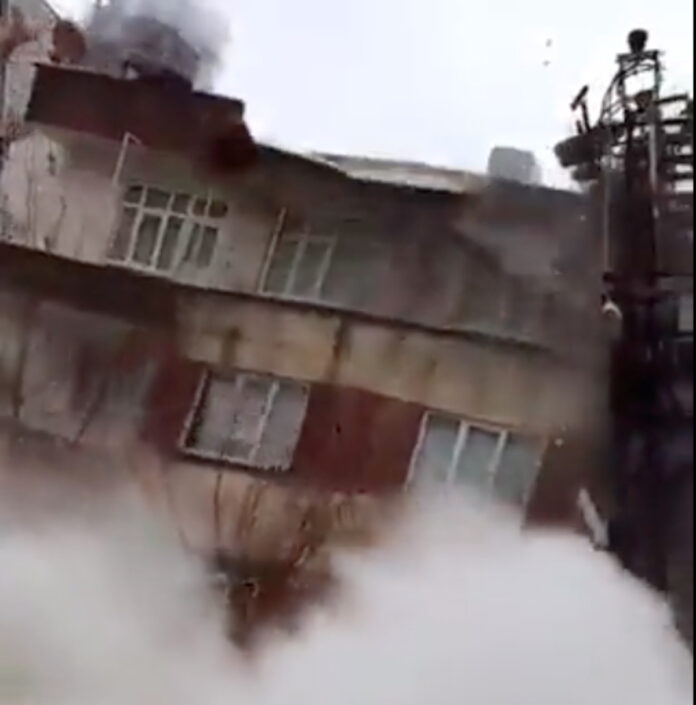If you are ever in a Turkish building and an earthquake hits, you better be prepared to run the fuck out of the building sharpish. It seems that Turkish building regulations, along with widespread corruption, equates to many buildings being constructed from sand and poor materials often put together in a very shoddy manner. Of course, not all Turkish buildings are poorly constructed, there are some developers who take care to adhere to good construction practices.
oh dear god…. the moment a building collapses in Turkey after second quake. #Turkiye #TurkeyEarthquake pic.twitter.com/CkXuhEed4w
— Asieh Namdar (@asiehnamdar) February 6, 2023
The East Anatolian fault line is a ruthless judge of building regulations, which is being pushed Westwards, causing immense pressure with the tectonic plates to snap. The aftershocks were stronger than the initial earthquake. The epicentre of the earthquake occurred at a point where three tectonic plates meet at a triple junction. The last earthquake of this magnitude in South East Turkey occurred 200 years ago. This region of Turkey is also populated by a large number of Syrian and Iraqi refugees.
🔴 Terribles images du #tremblementdeterre en #Turquie où des immeubles s’effondrent en pleine ville. Très lourd bilan avec plus de 1500 morts au total dans les deux pays. #seisme #Syrie #Syria #Turkiye #TurkeyEarthquake pic.twitter.com/mVo5V2PY2j
— InfOccitanie (@OccInfos) February 6, 2023
Imagine being in a high rise and on the 30th floor. Either you have a parachute and chance it out the window, or you will ride the thirty floors all the way down, ending up in the dust and rubble.
Turkish builders are often people with political connections who put profit above safety, and the cronyism and corruption of the government are the main reasons for the existence of “kacak” (contraband) buildings. Despite Turkey adopting the Italian model of earthquake prevention in building regulations recently, older buildings did not adhere to these regulations.
Heartbreaking visuals coming from #Syria and #Turkey after a massive #earthquake jolt. We stand with our brothers and sisters in this tough time. Ya Allah ham sab par reham farma, ameen🙏🏼❤️#TurkeyEarthquake #syriaearthquake pic.twitter.com/kzwj5LwCpS
— Pir Habib Ul Hassan (@PirHabibPir) February 6, 2023
Many buildings are decrepit and poorly maintained, but greedy developers who skimp on proper building regulations and use poor quality steel and cement are to blame for the horrendous collapses. Developers even use empty cooking oil drums in the pillars of those buildings, as well as poor quality cement with cheap fillers. When these defective “kacak” buildings collapse in earthquakes like a house of cards, one can only blame the prevalent corruption in the Turkish construction industry.
🇹🇷Turkey-Turquía🚨
More videos from the earthquake appeared. Here a whole residential building collapses. Developing story.
Más videos sobre el terremoto. Un edificio residential colapsa totalmente. En desarrollo#TurkeyEarthquake #Turkey pic.twitter.com/TgicEiyLxq
— Ares, Information Service (@Aresinfoservice) February 6, 2023
In Japan, the construction of buildings are optimised and designed to survive severe earthquakes by swaying with the tremors. Until Turkey adopts a similar form of regulatory system within the construction industry that is properly policed and enforced, they will continue to suffer.
DONATE TO HELP EARTHQUAKE ASSISTANCE






